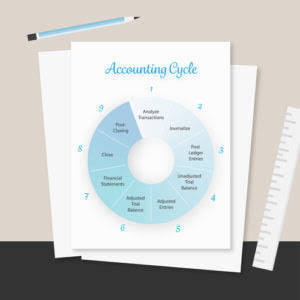
Depending on the expected wear and tear a machinery will go through over the years, the appraiser will help you know what the anticipated scrap value percentage of an asset is. They will also be able to calculate how long the machine is expected to be useful to a company based on how much the organization is going to use it. You can find the scrap value of your machinery and other assets by calculating their anticipated salvage value percentage.
How To Calculate Salvage Value? Definition & Formula
- There’s also something called residual value, which is quite similar but can mean different things.
- Learn more about what are the values of vehicles with rebuilt title s vs. clean titles.
- Simply put, when we deduct the depreciation of the machinery from its original cost, we get the salvage value.
- We can see this example to calculate salvage value and record depreciation in accounts.
- Scrap Value is a projected value of an asset that can’t be used any longer for original purposes.
Residual value has several applications in finance, accounting, leasing and investment Sales Forecasting analysis. Businesses and individuals use it to make decisions regarding asset management, cost recovery and long-term financial planning. Residual value is particularly important in automotive and equipment leasing, where it determines the final cost to a lessee if they choose to purchase the leased item. In accounting, it is used to calculate depreciation and determine an asset’s book value over time. Residual value, also referred to as salvage value, is the estimated remaining worth of an asset at the end of its expected useful life. It reflects what an asset can be sold for after depreciation or how much remains at the end of a lease agreement.
How To Calculate Depreciation Rate?
Each company has its way of guessing how much something will be worth in the end. Some companies might say an item is worth nothing (zero dollars) after it’s all worn out because they don’t think they can get much. But generally, salvage value is important because it’s the value a company puts on the books for that thing after it’s fully depreciated. It’s based on what the company thinks they can get if they sell that thing when it’s no longer useful. Sometimes, salvage value is just what the company believes it can get by selling broken or old parts of something that’s not working anymore.

Depreciation and After-Tax Salvage Value Assumptions
- It’s based on what the company thinks they can get if they sell that thing when it’s no longer useful.
- This value is typically estimated based on factors such as market conditions, asset condition, and demand.
- If the salvage value is greater than the book value then income added after deducting the tax, the value/ amount then left is called after-tax salvage value.
- Generally, salvage value increases the NPV and IRR of a project, as it reduces the net investment and increases the net cash flow.
- Conversely, if the sale price is lower than the adjusted tax basis, the difference may be deductible as an ordinary loss, depending on the asset’s classification.
As the name suggests, the salvage value of assets refers to their final value after they have depreciated over time. Also known as scrap value or residual value, it’s important for businesses to calculate the value to find the selling price of old assets. Accountants use several methods to depreciate assets, including the straight-line basis, declining balance method, and units of production method. Each method uses a different calculation to assign a dollar value to an asset’s depreciation during an accounting year.
Why Every Business Needs Comprehensive Insurance Coverage

Compare the IRR of the project with the required rate of return or the cost of capital of the company. If the IRR is greater than or equal to the required rate of return, the project is profitable and should be accepted. If the IRR is less than the required rate of return, the project is unprofitable and should be rejected.
Part 1 of 4: Determine Blue Book values
- By integrating financial data and automating calculations, Deskera ERP ensures accuracy and consistency in determining salvage values across various asset categories.
- It just needs to prospectively change the estimated amount to book to depreciate each month.
- Scrap value is conservative and simple, but it may ignore the potential resale value of the asset.
- If a specialty vehicle is deemed a total loss, it can often sell for a much higher salvage value at auction than a commonplace vehicle.
- Remember, accurately assessing salvage value involves a blend of quantitative analysis, industry expertise, and a touch of foresight.
On the other hand, the market value approach takes into account the current market conditions and the potential resale value of the asset. This method considers factors such as supply and demand, economic trends, and the condition of similar assets in the market. It provides a more realistic estimate of the salvage value based on the asset’s market worth. For example, suppose a company sells a machine for $20,000 at the end of its useful life, and the book value of the machine is $10,000. If the company’s ordinary income tax rate is 30% and the capital gains tax rate is 15%, the company may have to pay $3,000 or $1,500 in taxes on the bookkeeping gain, respectively. If the company’s ordinary income tax rate is 30%, the company may save $1,500 in taxes from the loss.

Depreciation and Tax Reporting
Salvage value refers to the estimated residual worth of a capital asset at the end of its useful life. It plays a crucial role in determining the overall value and depreciation of an asset. Understanding salvage value is essential for businesses and individuals alike, as it helps salvage value in making informed financial decisions.
- When it comes to vehicles, salvaged or not, an older vehicle is worth less than a newer vehicle.
- Salvage value plays a key role in tax reporting, influencing depreciation deductions.
- It represents the amount that could be obtained by selling the asset or using it for alternative purposes after accounting for depreciation.
- Get instant access to video lessons taught by experienced investment bankers.
- It is important to consider the salvage value when determining the depreciation expense for each period, as it impacts the overall depreciation calculation.
It’s the amount a company thinks it will get for something when it’s time to say goodbye to it. Companies use this value to figure out how much to subtract from the original cost of the thing when calculating its wear and tear. It’s also handy for guessing how much money they might make when they get rid of it. The double-declining balance method doubles the straight-line rate for faster depreciation. With a 20% straight-line rate for the machine, the DDB method would use 40% for yearly depreciation. In the example, the machine costs $5,000, has a salvage value of $1,000, and a 5-year life.
